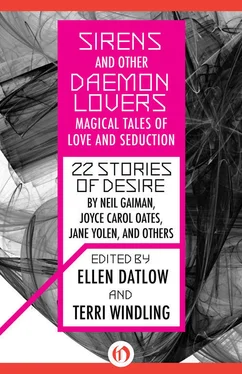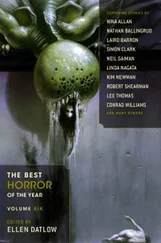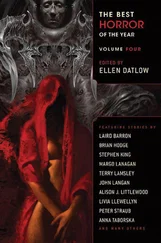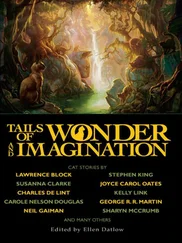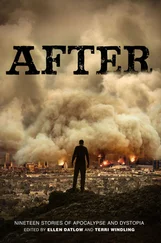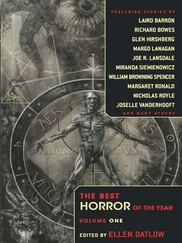The Irish glanconer, or Love-Talker, appears in the form of a charming young man—but woe to the woman who sleeps with him, for she will pine for this fairy’s touch, and lose all will to live. The Elfin Knight of Scottish balladry seduces virtuous maidens from their beds; these girls end up at the bottom of cold, deep rivers by his treacherous hand. The leanan-sidhe is the fairy muse who inspires poets and artists with her touch, causing them to burn so brightly that they die long before their time. The woodwives of Scandinavia are earthy, wild, and sensuous—yet their feminine allure is illusory and from the back their bothes are hollow. Nix and nixies are the male and female spirits who dwell in English rivers, heartbreakingly beautiful to look upon yet very dangerous to kiss—like the beautiful bonga maidens who haunt the riversides of India, the čacce-haldde in Lapland streams, and the neriads in the hidden pools and springs of ancient Greece. Mermaids, the descendants of the sirens, sun themselves by the ocean’s edge and sing their irresistible song; sailors who lust for them are drawn into the waves and drowned. Mermen and selkies (seal-men) come to shore to mate with human maids… but soon abandon their pregnant mortal lovers for the call of the waves.
When we look at older versions of stories we now consider children’s tales (Sleeping Beauty, Little Red Riding Hood, etc.), we find they too have a sexual edge missing in the modern retellings. In the earliest versions of Sleeping Beauty, the princess is wakened from her long sleep not by a single respectful kiss but by the birth of twins after the prince has come, fornicated with her passive body, and left again. In “animal bridegroom” stories older than the familiar version of Beauty and the Beast, the heroine is wed to the beastly groom before his final transformation; by the dark of night he sheds his animal shape and comes to her bed. “Take off your clothes and come under the covers,” says the wolf to Little Red Riding Hood. “I need to go outside and relieve myself,” the girl prevaricates. “Urinate in the bed, my child,” says the wolf, a wicked gleam in his eye—and only then does she know it is not Grandmother beneath the bedclothes. These were not tales created for children; they were tales for an adult audience—for listeners and readers who knew that the passions of princes are not always chaste; that beautiful girls might grow up to marry beasts; and that lecherous wolves can lurk in the woods or dress up in women’s clothes. (Indeed, so ribald were the old fairy tales that one of the earliest publications of them;—Straparola’s The Delectable Nights —brought charges of indecency from the Venetian Inquisition.)
For centuries, men and women have drawn upon the wealth of sexual imagery to be found in folk tales and classical myths to create fine works of erotic art—in painting, pottery, sculpture, drama, dance, lyric verse, and prose. This legacy comes down to us in beautiful works of ancient poetry: from Anakreon of Ionia (“I clutched [Eros] by the wings and thrust him into the wine and drank him quickly”), from Sappho of Lesbos (“I am a trembling thing, like grass, an inch from dying”), from Catallus of Verona (“She fondles between her thighs, attacking with long fingers whenever she hungers for its sharp bite”). We find an equally vivid sexuality in the verse of the women poets of old Japan, like Onono Komachi (“When my desire grows too fierce I wear my bedclothes inside out”) and Izumi Shikibu (“How deeply my body is stained with yours…”). Ou-Yang Hsiu (“Behind the crystal screen, two pillows: on one, a hairpin fell…”) and the “Empress of Song” Li Chi’ing-Chao (“I hold myself in tired arms until even my dreams turn black”) created the celebrated love poetry of China in centuries past. In India, the delicious mytho-erotic tradition found in stories of Shiva, the dancing Goddess, and Krishna’s amorous exploits is beautifully evoked by numerous poets including Jelaluddin Rumi, whose verses became ecstatic dances for the whirling dervishes (“When lovers moan, they’re telling our story, like this …”), and the Indian princess Mirabai, whose gorgeous, passionate poems were addressed to Krishna, the Dark One (“At midnight she goes out half-mad to slake her thirst at his fountain…”).{For complete transcriptions of these and other erotic poems from ancient times to the present, seek out The Erotic Spirit, an excellent and informative anthology edited by Sam Hamill, Shambhala Publications, 1996.)}
In the West, a repressive influence dominated the arts as Christian society sought to distance itself from the earthy sexuality of the older animist religions. As a result, we have only a paltry store of erotic poetry and sensual prose from the fourth century onward (compared to India, China, and Japan where sexuality continued to be perceived as a natural force and not a cause for shame.) Yet by using symbols drawn from pre-Christian myth and folklore, Western artists and writers found an important outlet for erotic imagery. We see this particularly in the luminous art of the Italian Renaissance, where Christian devotional works sit side-by-side with mythic works of a distinctly sensual nature—such as Botticelli’s voluptuous nymphs and pagan goddesses; Michaelangelo’s “Leda” (Leda’s rape by Jupiter in the form of a swan); and Raphael’s secret frescoes for the bathroom of Cardinal Bibiena in the Vatican (based on erotic stories drawn from Greco-Roman myth).
In Western literature, eroticism is firmly entwined with myth and fantasy in works by some of the greatest writers of the English language. We find it in the beguiling faery enchantresses of Malory’s Le Morte D’Arthur; in the men and women be-spelled by sexual glamour in the Lays of Marie de France; in the sexual violence and intrigue of Spenser’s Faerie Queene; in the amorous antics of the fairy court in Shakespeare’s A Midsummer Night’s Dream, as well as the darkly magical sensuality of The Tempest; in the sexualized denizens of fairyland in Pope’s The Rape of the Lock; in the dangers of fairy seduction found in the ballads of Sir Walter Scott as well as the poems of Byron, Keats, Blake, Tennyson, and Yeats.
In Victorian England, folk tales, fairy lore, and Arthurian symbolism enjoyed an explosive popularity at the same time that sexual expression was most repressed in polite society. Fairy paintings by Fuesili, Noel Paton, and J. A. Fitzgerald fairly drip with an eroticism which would have been banned from respectable galleries if the nudes painted so lusciously had not been given fairy wings. Aubrey Beardsley, on the other hand, never courted respectability; this young man’s distinctive illustrations for The Rape of the Lock and other fantasies were overtly and deliberately erotic, full of languid women, lewd fairies, and satyrs sporting enormous phalluses. Rossetti’s mythic Pre-Raphaelite ladies, with their pouting red lips just waiting to be kissed, were attacked in the Victorian press as lewd and immoral images (albeit these paintings merely look quaintly romantic to us today). Goblin Market, the famous fairy poem by Christina Rossetti (sister to the painter), was ostensibly a simple story about the dangers of eating goblin fruit—yet it reads as a heated metaphor for the sexual seduction of innocent young girls. The “fairy music” composed for the harp—a popular fad in Victorian times—also had distinctly erotic overtones; these composers enjoyed the celebrity accorded to pop stars today, and flushed young women would sigh and swoon during their performances. Richard Burton’s translation of the magical Arabian stories of The Thousand and One Nights also brought erotic tales to the Victorian public in the form of fairy stories. Burton’s frank (for the times) translation caused a publishing scandal; nonetheless (or because of this) the book went on to become a bestseller, and a fad for Orientalism joined the popularity of Victorian fairy lore—a distinct thread of magical eroticism running through them both.
Читать дальше
